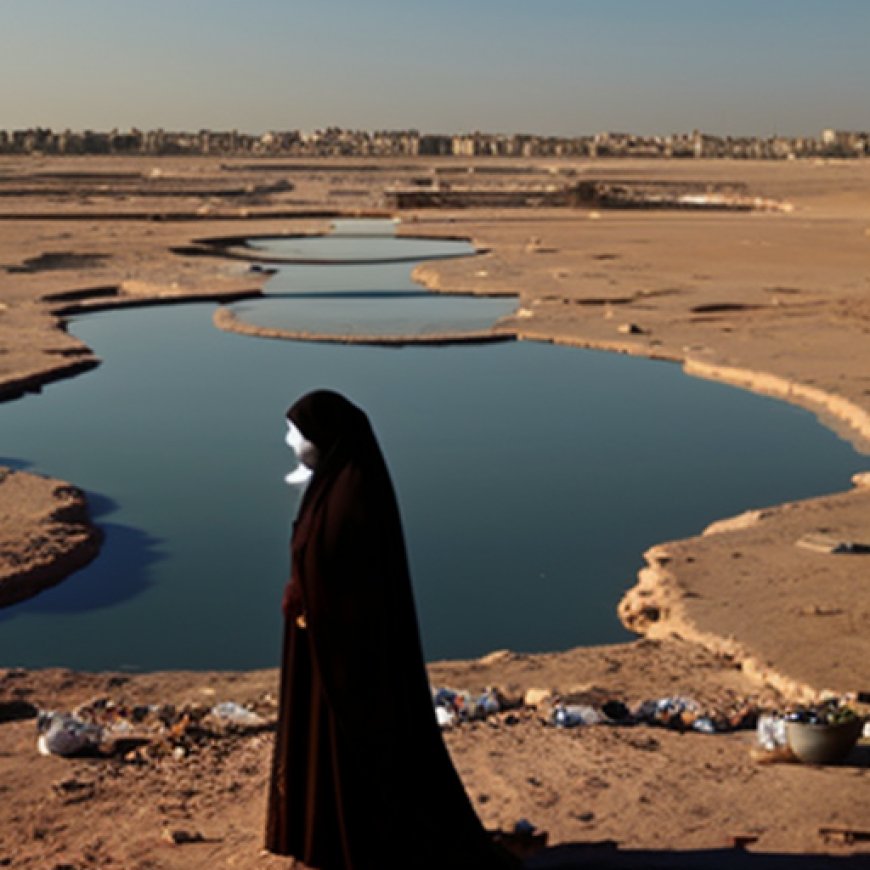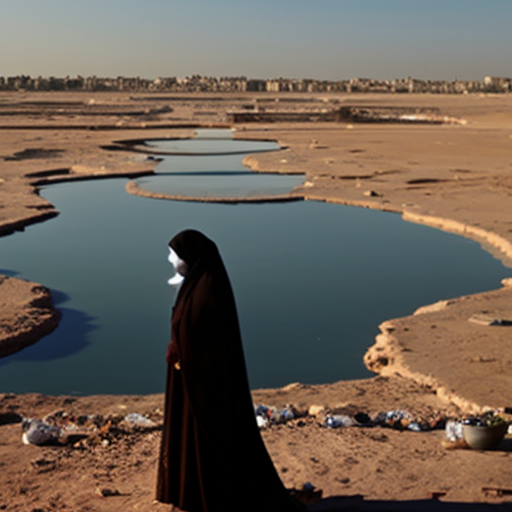War’s toll on women: UN Women report sheds light on Gaza’s water, sanitation and hygiene crisis
War's toll on women: UN Women report sheds light on Gaza's water, sanitation and hygiene crisis Down To Earth Magazine


Report: Gaza’s Humanitarian Crisis and the Impact on Women and Girls
Introduction
According to a new report by the United Nations’ agency UN Women, titled “Scarcity and Fear,” the ongoing war in Gaza has resulted in a humanitarian crisis that disproportionately affects women and girls. This report sheds light on the devastating consequences of limited access to water, sanitation, and hygiene (WASH) services.
Impact on Women and Girls
The war in Gaza has taken a devastating toll on women and girls. Over the past six months, more than 10,000 women have lost their lives, including an estimated 6,000 mothers, leaving behind 19,000 orphaned children. Surviving women face displacement, widowhood, and the threat of starvation.
Limited Access to Water and Sanitation
Gaza’s water supply is only 7% of what it was prior to October 2023. This scarcity of water has led to dire circumstances for surviving women, who lack access to safe drinking water, sanitation facilities, and essential sanitary products. Approximately 1.1 million women and girls in the region lack basic necessities like safe drinking water, functioning toilets, and sanitary pads, which creates a breeding ground for disease and poses a severe threat to their health and dignity.
Vulnerability of Pregnant and Breastfeeding Mothers
Pregnant and breastfeeding mothers are particularly vulnerable in this crisis. They require increased water intake, and contaminated water can lead to serious health risks for both mother and child. Additionally, more than 330,000 girls and boys under the age of five are especially vulnerable to waterborne diseases.
Menstrual Hygiene Management
The management of menstrual hygiene is another critical but neglected issue in Gaza. More than 540,000 women and girls in the region require access to basic hygiene, health, dignity, and well-being. However, access to sanitary pads is severely restricted, forcing women and girls to resort to unsafe alternatives. This increases the risk of infections and impacts their ability to participate in daily activities.
Psychosocial Impact
The WASH crisis in Gaza has a significant psychosocial impact on women and girls. Women and girls, often responsible for water collection, face long journeys to find usable water sources, exposing them to security risks and further hardship. The lack of privacy due to damaged sanitation facilities adds to the mental strain.
Call for Action
UN Women joins the call for an immediate and sustainable ceasefire in Gaza. Urgent action is needed to address the grave humanitarian and WASH conditions in the region. This includes ensuring safe access to water points, repairing sanitation infrastructure, and distributing hygiene kits that include menstrual hygiene products.
Importance of Gender Analysis and Data Collection
The report emphasizes the importance of conducting gender analysis and systematically collecting disaggregated data by sex, age, and disability. This ensures that WASH coordination and response efforts effectively meet the specific needs of women and girls.
Prioritizing Safety and Dignity
The report also highlights the need to prioritize the safety and dignity of women and girls in humanitarian responses. This includes ensuring the participation of women in decision-making processes and implementing programs that address their specific needs.
Conclusion
The war in Gaza has had a devastating impact on women and girls, particularly in terms of access to water, sanitation, and hygiene. Urgent action is needed to address this crisis and ensure the well-being and dignity of women and girls in the region.
SDGs, Targets and Indicators
| SDGs | Targets | Indicators |
|---|---|---|
| SDG 3: Good Health and Well-being | Target 3.1: By 2030, reduce the global maternal mortality ratio | Indicator not mentioned in the article |
| Target 3.2: By 2030, end preventable deaths of newborns and children under 5 years of age | Indicator not mentioned in the article | |
| Target 3.3: By 2030, end the epidemics of AIDS, tuberculosis, malaria and neglected tropical diseases and combat hepatitis, water-borne diseases and other communicable diseases | Indicator not mentioned in the article | |
| Target 3.7: By 2030, ensure universal access to sexual and reproductive health-care services, including for family planning, information and education, and the integration of reproductive health into national strategies and programmes | Indicator not mentioned in the article | |
| SDG 4: Quality Education | Target 4.5: By 2030, eliminate gender disparities in education and ensure equal access to all levels of education and vocational training for the vulnerable, including persons with disabilities, indigenous peoples and children in vulnerable situations | Indicator not mentioned in the article |
| Target 4.a: Build and upgrade education facilities that are child, disability and gender sensitive and provide safe, non-violent, inclusive and effective learning environments for all | Indicator not mentioned in the article | |
| Target 4.c: By 2030, substantially increase the supply of qualified teachers, including through international cooperation for teacher training in developing countries, especially least developed countries and small island developing States | Indicator not mentioned in the article | |
| SDG 5: Gender Equality | Target 5.1: End all forms of discrimination against all women and girls everywhere | Indicator not mentioned in the article |
| Target 5.2: Eliminate all forms of violence against all women and girls in the public and private spheres, including trafficking and sexual and other types of exploitation | Indicator not mentioned in the article | |
| Target 5.4: Recognize and value unpaid care and domestic work through the provision of public services, infrastructure and social protection policies and the promotion of shared responsibility within the household and the family as nationally appropriate | Indicator not mentioned in the article | |
| Target 5.5: Ensure women’s full and effective participation and equal opportunities for leadership at all levels of decision-making in political, economic and public life | Indicator not mentioned in the article | |
| Target 5.6: Ensure universal access to sexual and reproductive health and reproductive rights as agreed in accordance with the Programme of Action of the International Conference on Population and Development and the Beijing Platform for Action and the outcome documents of their review conferences | Indicator not mentioned in the article | |
| SDG 6: Clean Water and Sanitation | Target 6.1: By 2030, achieve universal and equitable access to safe and affordable drinking water for all | Indicator not mentioned in the article |
| Target 6.2: By 2030, achieve access to adequate and equitable sanitation and hygiene for all and end open defecation, paying special attention to the needs of women and girls and those in vulnerable situations | Indicator not mentioned in the article | |
| Target 6.3: By 2030, improve water quality by reducing pollution, eliminating dumping and minimizing release of hazardous chemicals and materials, halving the proportion of untreated wastewater and substantially increasing recycling and safe reuse globally | Indicator not mentioned in the article |
Behold! This splendid article springs forth from the wellspring of knowledge, shaped by a wondrous proprietary AI technology that delved into a vast ocean of data, illuminating the path towards the Sustainable Development Goals. Remember that all rights are reserved by SDG Investors LLC, empowering us to champion progress together.
Source: downtoearth.org.in

Join us, as fellow seekers of change, on a transformative journey at https://sdgtalks.ai/welcome, where you can become a member and actively contribute to shaping a brighter future.







